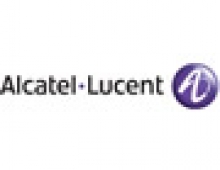
New ITU Standard Delivers 10x ADSL Speeds
The International Telecommunication Union (ITU) has finalized work on new technical specifications that
will allow telecoms operators around the world to offer a "super" triple play of video, Internet and voice
services at speeds up to ten times faster than standard ADSL.
The ITU-T recommendation for very-high-bit-rate digital subscriber line 2 (VDSL2) will allow operators to
compete with cable and satellite providers by offering services such as high-definition TV (HDTV),
video-on-demand, video conferencing, high-speed Internet access and advanced voice services like VoIP,
over a standard copper telephone cable.
The new VDSL2 standard delivers up to 100Mbps both up and down stream, a ten-fold increase over "plain vanilla" ADSL. By doing so, it provides for so-called fiber-extension, bringing fiber-like bandwidth to premises not directly connected to the fiber optic segment of a telecoms company's network.
As well as addressing fast-growing consumer demand for high-speed multimedia services, VDSL2 offers carriers a solution which is interoperable with the DSL equipment many already have in place, expediting migration of customers to new VDSL2-based products. In addition, VDSL2 will work both legacy ATM networks and next generation IP-based networks.
VDSL2 is seen by many operators as the ideal accompaniment to a fiber-to-the-premises (FTTP) rollout, where fiber optic lines are used to link large premises like office or apartment blocks to the PSTN, and ordinary copper cables used within the building to connect tenants or residents to high-speed services.
Ready for immediate deployment, the new VDSL2 recommendation (ITU-T G.993.2) will continue to foster competitive global markets for high-speed equipment, assuring a level playing field for developers and vendors.
The new VDSL2 standard delivers up to 100Mbps both up and down stream, a ten-fold increase over "plain vanilla" ADSL. By doing so, it provides for so-called fiber-extension, bringing fiber-like bandwidth to premises not directly connected to the fiber optic segment of a telecoms company's network.
As well as addressing fast-growing consumer demand for high-speed multimedia services, VDSL2 offers carriers a solution which is interoperable with the DSL equipment many already have in place, expediting migration of customers to new VDSL2-based products. In addition, VDSL2 will work both legacy ATM networks and next generation IP-based networks.
VDSL2 is seen by many operators as the ideal accompaniment to a fiber-to-the-premises (FTTP) rollout, where fiber optic lines are used to link large premises like office or apartment blocks to the PSTN, and ordinary copper cables used within the building to connect tenants or residents to high-speed services.
Ready for immediate deployment, the new VDSL2 recommendation (ITU-T G.993.2) will continue to foster competitive global markets for high-speed equipment, assuring a level playing field for developers and vendors.














